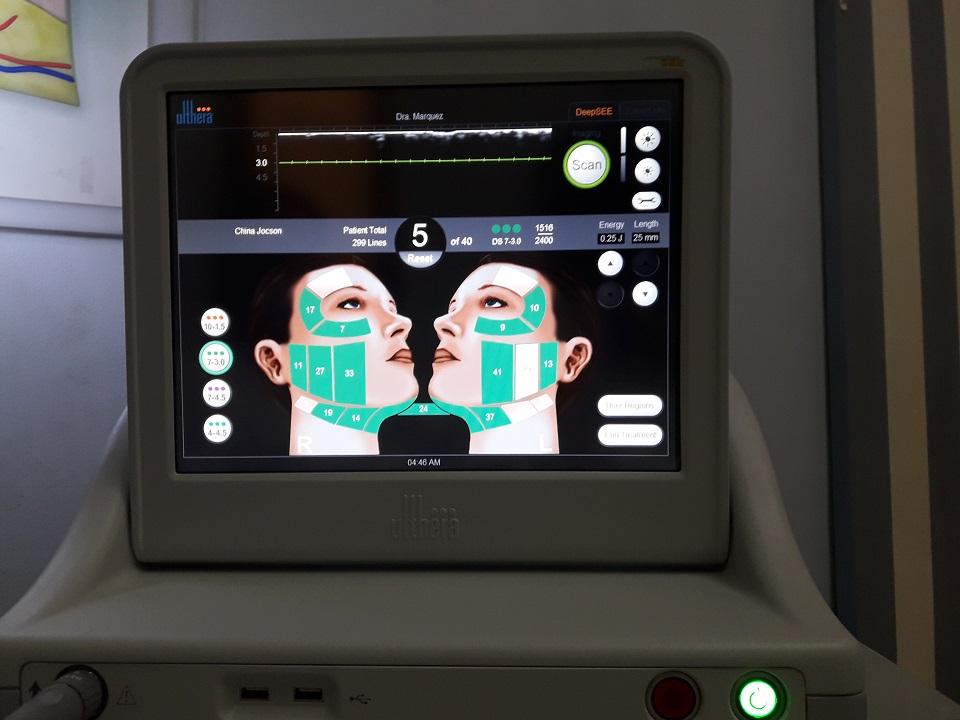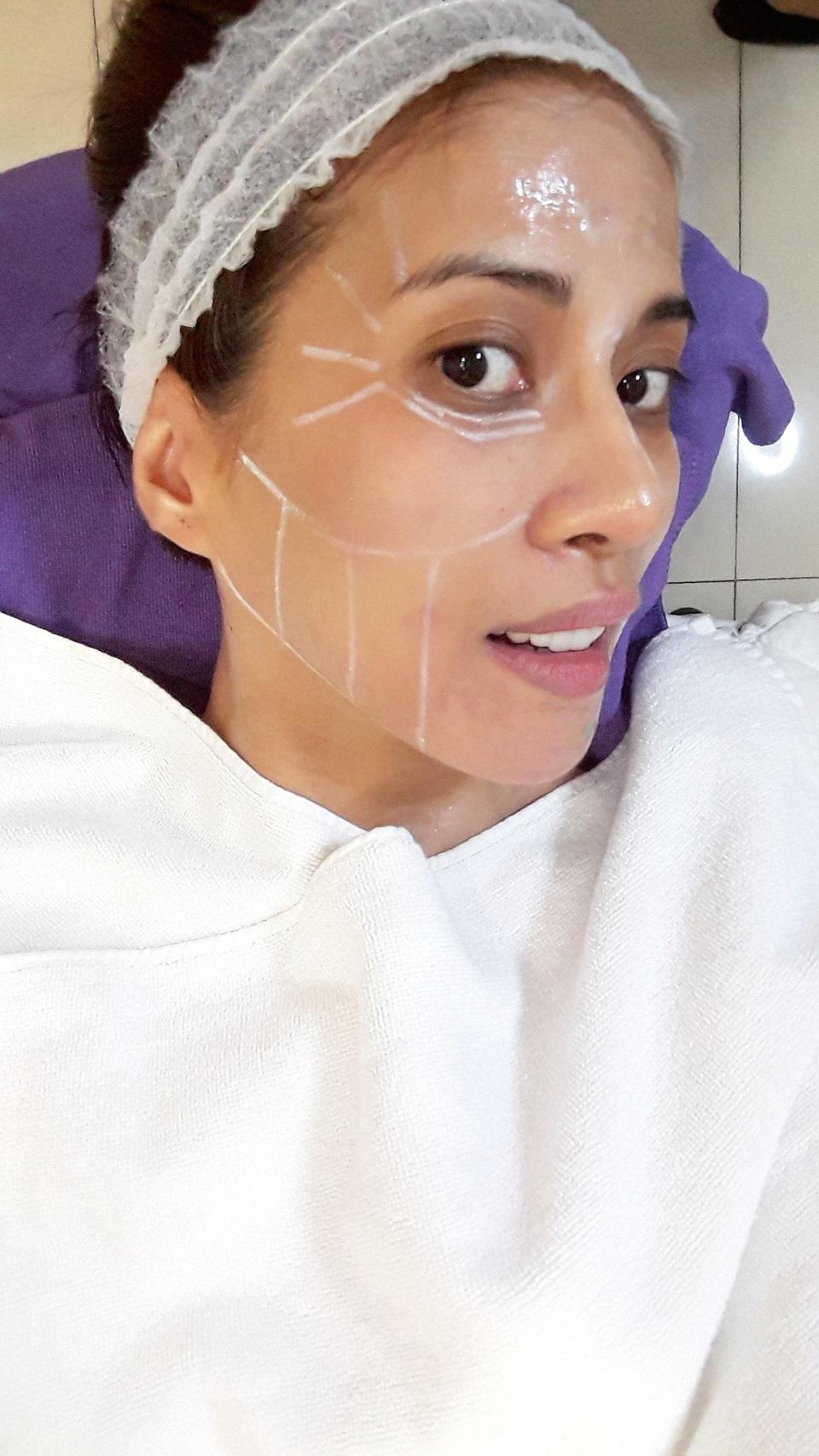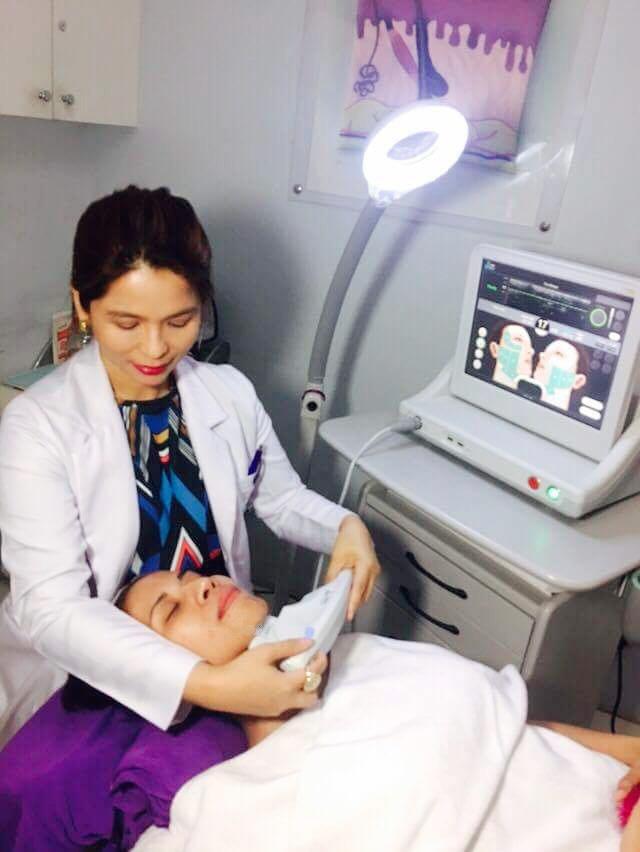No going under the knife: Treatment uses ultrasound to lift, tighten skin
In the words of Coco Chanel, “Nature gives you the face you have at twenty; it is up to you to merit the face you have at fifty.”
With more or less 20 years to go before I turn golden, it is no secret that I have been working on aging well. I have documented my quest for the fountain of youth, from drinking collagen elixir to my obsession with laser machines such as Cleartight.
Recently, after a year of contemplating, I finally went for a face lift, the non-surgical kind. I have seen posters, billboards and ads about Ulthera offered by skin clinics such as Belo, Aivee Aguilar and my own dermatologist, Dr. Jean Marquez.
Ulthera uses ultrasound energy to lift and tighten skin. A number of friends have sworn to its efficacy. So I called in to be scheduled for the lift.

The procedure
First, the attending nurse read and explained the patient consent form to me. It listed possible scenarios such as discomfort from the heat, redness of the treated areas, swelling and temporary numbness. It also said that results vary from patient to patient; and that "results will unfold over the course of 3 to 6 months."
Most importantly, "Ulthera treatment is not intended to produce the same results as an invasive surgical procedure."
After signing the form, I proceeded with the usual protocol of changing into a robe, lying down on a treatment bed and getting my face and neck cleansed. Then my face and neck were lathered with topical anesthesia and I was given mefenemic acid to help with the possible pain.
After 40 minutes, the nurse marked my face with the Ulthera marker. Dr. Marquez (full disclosure: Marquez is also a host on GMA's Pinoy MD and has been featured in this writer's previous articles) then proceeded with the treatment.
I would say that Ulthera is quite similar to laser procedures. The machine tip passed over my face and neck. There was some tingling and heat, but it did not bother me. I felt some pain on my cheek and cheekbone areas, which Marquez said were among my most sensitive spots.
The treatment took an hour.

My skin felt stretched right after and there was residual numbness from the anesthesia. A slight lift was seen immediately after but barely noticeable unless pointed out.
Marquez explained, “I adjusted the settings according to your need, which is basically prevention and collagen building. Your face has no sagging yet and if we go all out, baka mabura na yung mukha mo sa liit.”
Friends have said my face looks tighter, but I will wait three to six months before I can vouch for it.
Collagen "jumpstart"
To answer my pre-procedure questions, I as always consulted Marquez and my other dermatologist, Dr. Sherwin Llego of Makati Medical Center.
According to Marquez, Ulthera "stimulates collagen production by delivering focused ultrasound energy to the skin's foundational layer typically addressed in cosmetic surgery—without cutting or disrupting the surface of the skin."
Llego said that the ultrasound and heat energy "remodel, jumpstart, stimulate collagen, which is the main building block of skin."
Both doctors said that Ulthera can be used by people in their thirties and up. While Marquez believes that it may be done on people in their twenties "as long as there is skin laxity," Llego thinks that undergoing Ulthera before your thirties is not practical. "Most of our skin changes appear in the older age group," he said.
"Response to anti-aging modalities is widely varied because of many factors like race, age, condition of skin, type of skin and other associated problems like skin tone and discoloration," Llego added.

"In your thirties, you start to lose tightness of skin. At your forties, [there is] further loss of elasticity and tightness of skin with beginning signs of discoloration. At your fifties [is the] beginning of volume loss, loss of tightness more marked and more signs of photo aging.
"I firmly believe that patient selection is key to the success of the treatment. Best results are in the middle-aged to old age group because the principle of Ulthera is based on the healing and recovery of collagen from shear forces. Ultrasound’s best results will be on patients with mild to moderate sagging/laxity."
Llego said that for people in their thirties, treatments such as Ulthera would be more of a "prevention," so the treatment area usually covers the whole face and neck. For patients in their forties, "concentration is on the mid-face, [while in your fifties, it's] mid-face, lower face, neck. There is no particular area, really, but the mid-face is usually the hardest to treat and is most affected by volume loss and laxity, making it an area of concern."
The doctors said that after the procedure, the patients might choose to go for annual touch-up treatments.
Lifestyle changes
Llego adds that you can take better care of your skin by making better lifestyle choices. "Change and improve lifestyle. Cut smoking, less drinking. Eat right, exercise. All these help enhance results from any form of anti-aging modality," he said.
"Lifestyle, diet, exercise must always be taken into consideration in doing these anti-aging procedures. And while prevention is better than cure, I am not advising Ulthera for the very young as there are no studies that prove that if it is done early, it can prevent sagging."
The Ulthera treatment cost ranges from P90,000 to P180,000 depending on the areas and the extent of the treatment. Reputable skin centers such as Belo Medical, The A Institute by Aivee Aguilar-Teo and The Skin Specialist by Dr. Jean Marquez are a few that offer the treatment in their centers. It must also be noted that only dermatologists with proper Ulthera training can administer the procedure. — BM, GMA News



